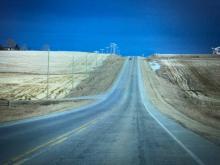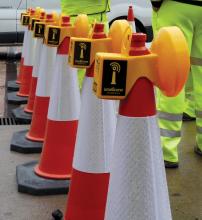The authorities in the US state of Ohio have highlighted the increased risk of crashes involving deer. This is due to a combination of factors including fewer daylight hours and the increased movement of deer due to mating season, along with the hunting season. The road identified as having the greatest risk in the state is State Route 64 in Lucas County between Reed Road and US Route 20 Airport Highway. This road suffered 19 crashes in 2014.
The authorities in the US state of Ohio have highlighted the increased risk of crashes involving deer. This is due to a combination of factors including fewer daylight hours and the increased movement of deer due to mating season, along with the hunting season. The road identified as having the greatest risk in the state is State Route 64 in Lucas County between Reed Road and US Route 20 Airport Highway. This road suffered 19 crashes in 2014.
Ohio’s Department of Transport, ODOT, has advised drivers to watch for deer crossing signs and drive with extreme caution, especially in posted areas. It also says that when a driver sees a deer near a road, others will be present nearby and to keep a close lookout for deer near roadways, especially at dawn and after sunset. About 20% of crashes involving deer occur in early morning, while over half occur between 5 pm and midnight. After dark, drivers should use high-beam when there is no oncoming traffic. These will illuminate the deer eyes allowing more time to react. Drivers should always wear safety belts and drive at safe, sensible speeds for road conditions.
If a vehicle strikes a deer, motorists should report the crash by calling local law enforcement, the sheriff’s department, the Ohio State Highway Patrol, or the Ohio Department of Natural Resources – even if there was no damage to the motorist’s vehicle. Motorists can claim the carcass through those agencies.
Ohio’s Department of Transport, ODOT, has advised drivers to watch for deer crossing signs and drive with extreme caution, especially in posted areas. It also says that when a driver sees a deer near a road, others will be present nearby and to keep a close lookout for deer near roadways, especially at dawn and after sunset. About 20% of crashes involving deer occur in early morning, while over half occur between 5 pm and midnight. After dark, drivers should use high-beam when there is no oncoming traffic. These will illuminate the deer eyes allowing more time to react. Drivers should always wear safety belts and drive at safe, sensible speeds for road conditions.
If a vehicle strikes a deer, motorists should report the crash by calling local law enforcement, the sheriff’s department, the Ohio State Highway Patrol, or the Ohio Department of Natural Resources – even if there was no damage to the motorist’s vehicle. Motorists can claim the carcass through those agencies.






